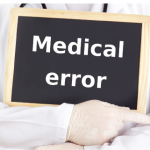I knew I shouldn’t look.
I was driving 60 miles per hour, heading north on I-95, trying to get to the George Washington Bridge before dusk.
It takes a certain fatalism to drive through New York City if you are not a native. Ninety percent of the drivers sharing the road with you know exactly where they are going, and their driving style reflects that. The New York City driver is fearless, routinely committing acts of high speed daring that are safe only because they have memorized the curve of the road. In New York, the broken white lines painted on the streets are a suggestion, not a command, and drivers will not hesitate to ignore that suggestion completely if they see a way to shave a second off of their commute.
I still think of myself as a New Yorker, but it has been years—decades, really—since I lived in New York full time. In the intervening time, my reflexes have slackened. Technically, I left New York to live in another city, but driving in Baltimore takes an entirely different skill set. In Baltimore, you learn to keep your eyes on the road and your hands on the wheel, ready to swerve around a pothole or a pedestrian. Driving in New York feels more like the final examination for an advanced defensive driving class run by a sadist.
Unfortunately, almost everyone I am related to in this world lives on the distal end of the George Washington Bridge, so I make this trip not infrequently. That said, I prefer to complete the bulk of the trip during daylight hours, so I am on familiar ground before I am blinded by the headlights of oncoming traffic.
The last time I made this trip, I glanced at my phone because I received a text. As I said, I knew I shouldn’t look, but it also occurred to me that it was a Friday afternoon. I probably only had a few hours before whoever was looking for me would disappear into their own weekend.
In this case, it was a radiologist. Never a good sign. I have never received a call from a radiologist just to let me know that the chest X-ray was clear. If a radiologist was reaching out, particularly on a Friday afternoon, it was probably important.
So I called the radiologist back. He just wanted to let me know that my patient had an aortic dissection.
Just?
I asked a number of follow-up questions, but if I am being honest, I was less interested in the answers and more just stalling for time. I had no idea who this patient was, and I hoped that if we kept talking, it might come to me.
Eventually, I realized the patient was a 50-something-year-old woman I had met during the prior month for a question of large vessel vasculitis. The answer was that she didn’t have vasculitis, but she did have something. She had brought her magnetic resonance angiogram with her, but the images—and the radiologist’s interpretation—were both fuzzy. After failing to decipher either, I decided it would be easier to have another test performed. I gave her a prescription for a computed tomography (CT) angiogram, with instructions to get the test whenever it was convenient.
Apparently, it was convenient on a Friday afternoon.
The radiologist wasn’t able to tell me much. The dissection was large, but there were no stigmata indicating whether it occurred the week before or in the previous month.



